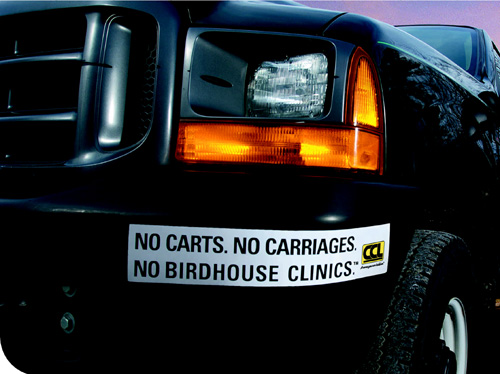The agency simply never understood Parr’s business and brand in the market, Bond says, and was thus unable to communicate it properly. Following that debacle, Parr created an in-house marketing position and hired from within; today, the dealer has an effective, measurable, and cost-efficient marketing plan that has boosted awareness of the Parr Lumber name across Oregon.
The cost of developing and executing a marketing plan, says Meehan, is a big hurdle put in front of Yellow Steel by potential clients. “When a dealer spends money for a truck or even a salesperson, they can see a return on that investment,” he says. “For most of them, marketing is an intangible expense they can’t measure.”
To combat sticker shock and educate dealers on marketing ROI, Meehan breaks his services into manageable chunks and suggests measurable goals, such as an increase in the dealer’s small-volume sales.
More important, Yellow Steel offers marketing vehicles that leverage as much co-op money from product manufacturers as possible to lessen the cost. “Most pro yards have a lot of co-op money sitting on the table going unused,” he says.
Specifically, the agency operates a separate division that custom-publishes bimonthly newsletters and newspapers for dealers to distribute to their contractor base. For efficiency, half of the eight-page newspapers are of timely, if generic, industry news and business tips. The remaining pages are left for the dealer, though the agency also produces those stories and photos from the dealer’s cue.
To counter the cost of its services, as well as printing and mailing, the agency works with the dealer’s manufacturers and vendors to capture co-op dollars in exchange for ads in the newspaper. “It costs much less than an ad in a trade magazine and gets their products in front of a pro audience,” Meehan says.
It also lessens the cost burden for dealers—in some cases to zero—and helps them see the value in investing in additional marketing efforts. “Most lumberyards want to communicate more frequently [with their pro customers] and with an organized marketing approach,” says Meehan. “The newspapers do that, and also spin off other efforts,” including alliance programs, seminars, promotional events, and electronic marketing.
Like Meehan’s newspapers, Schneider pays for his radio spots with co-op dollars earned by mentioning brands and products on the air. “It’s about a 70/30 split,” he says, regarding product-focused information versus community issues, such as his on-air support of a recent school levy. “Our strategic goal is to spend every coop dollar we get, and this is an efficient way to do that.”
To write and record his radio spots, and further reduce the price, Schneider chose to forego even the cost and inconvenience of using a studio, much less an agency. “I heard what else was out there and thought, ‘I can write that,’” he says. To save even more time and money, Schneider records the 60-second spots on his PC, then e-mails the file to the radio station, without a discernable difference in production quality.
Bottom Line Regardless of whether a dealer uses an agency, leverages co-op dollars, or chooses print or broadcast media to deliver their message, Bond believes that developing a brand and a marketing plan around it is essential—and requires buy-in from employees as well as customers. “You need to establish a set of behaviors,” that support the brand, he says. “If you can’t pull in the employees, you won’t get the message to customers. And if they don’t get the message, you’ve lost all the money you spent.”

